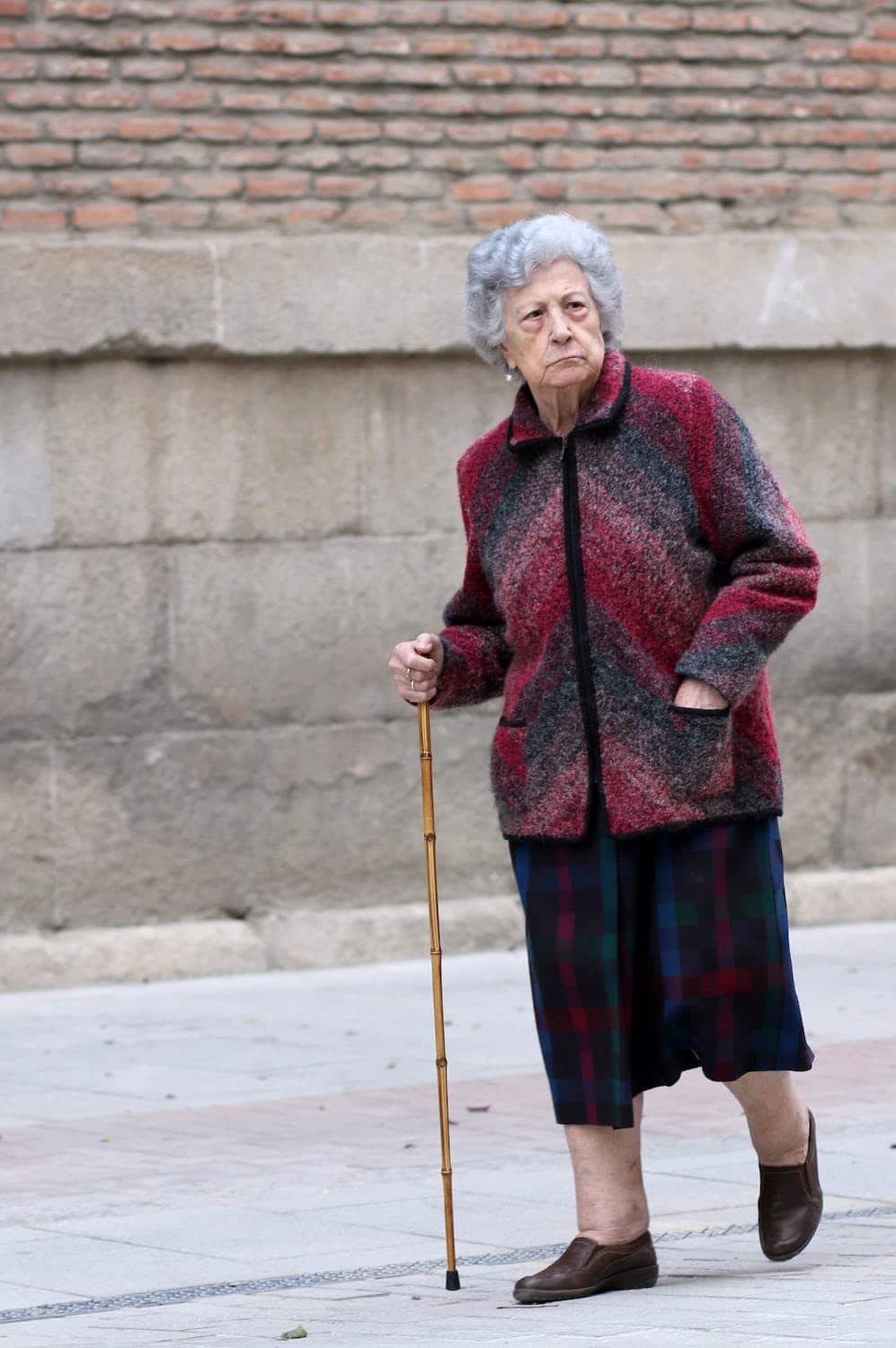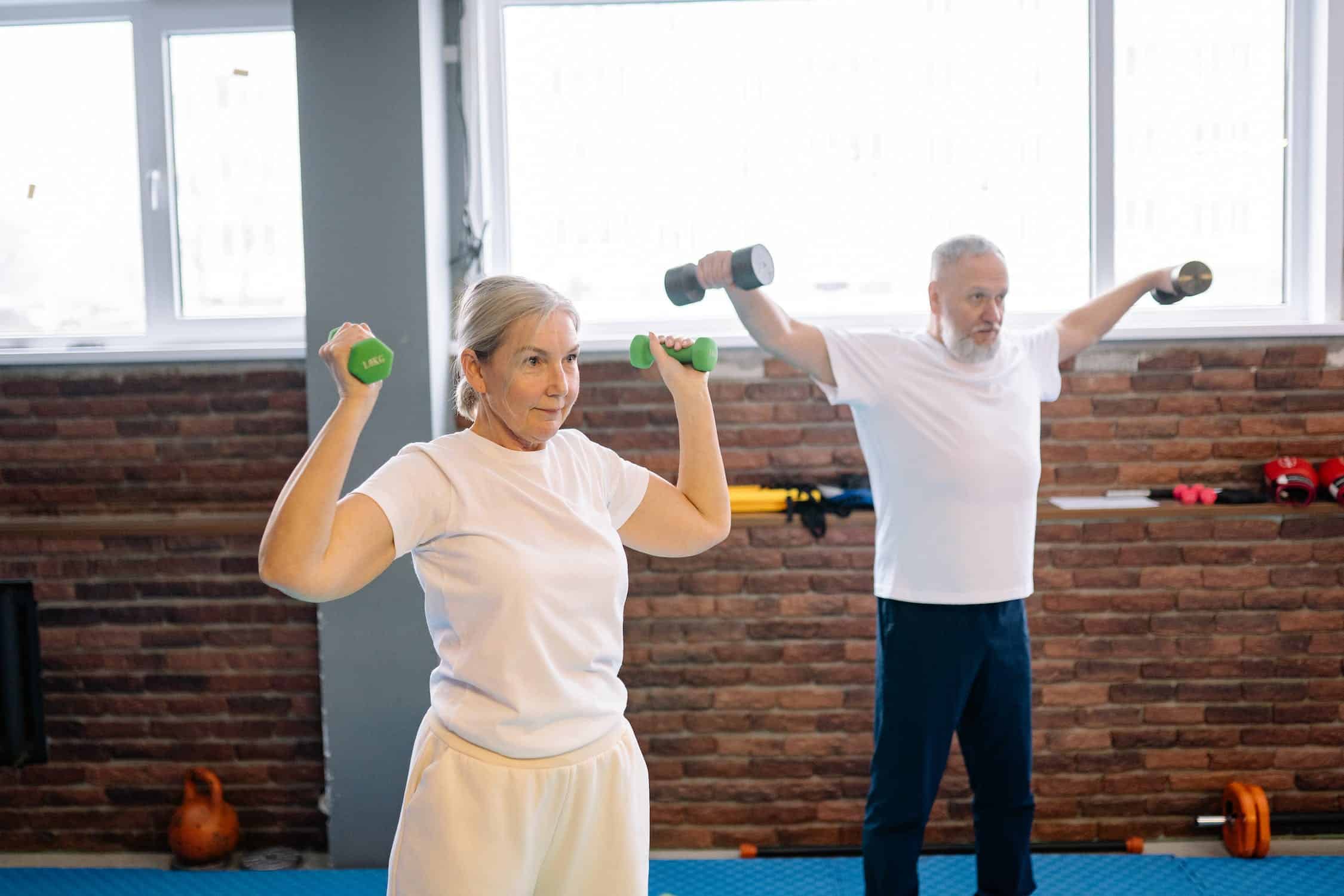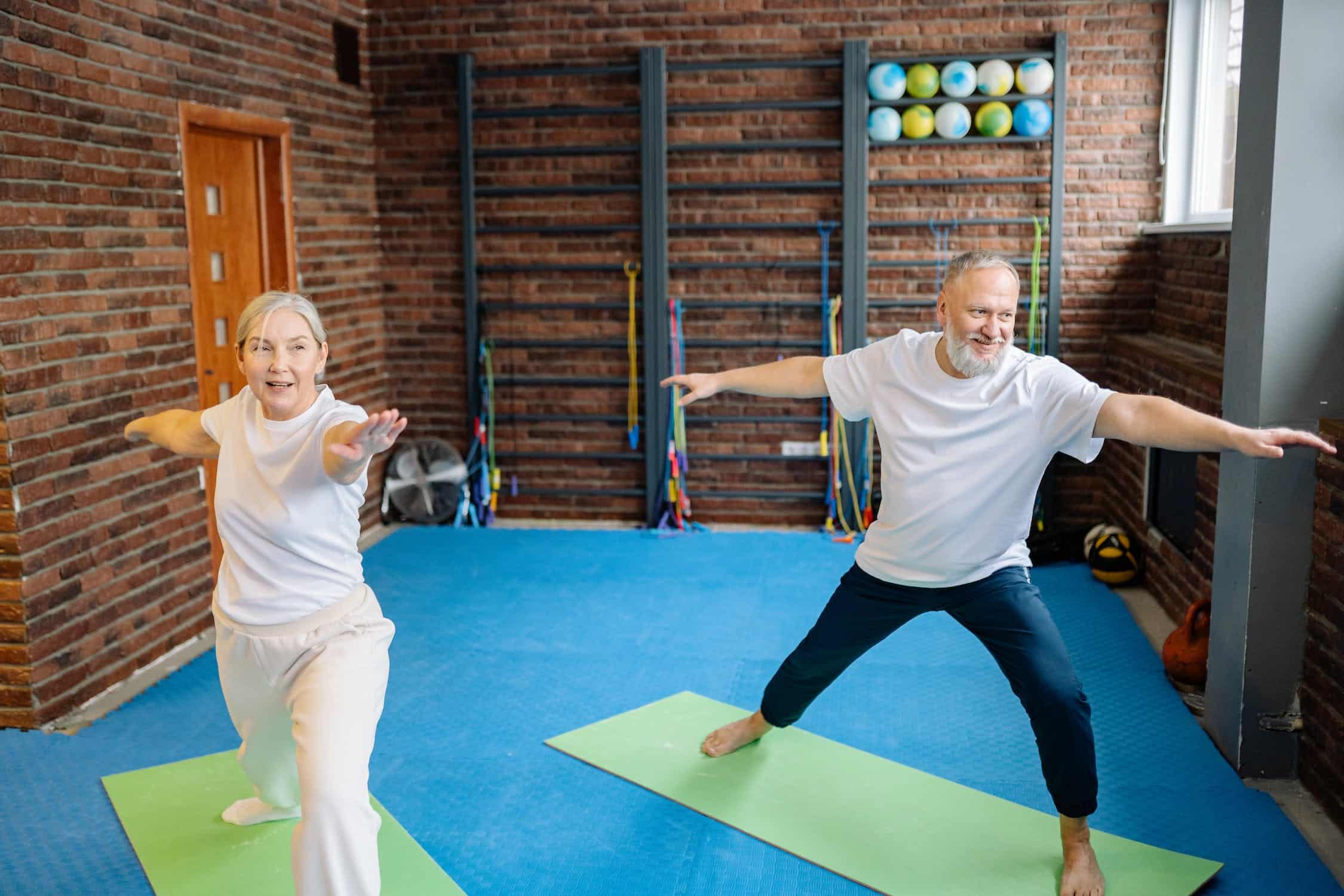Way to Healthy Aging: Best Weight Loss Exercises for Seniors
Aging brings about numerous changes in our bodies, including a natural decline in metabolism and muscle mass. However, this doesn’t mean that seniors should abandon their aspirations of achieving a healthy weight. In fact, regular exercise is a key component of maintaining a healthy lifestyle and shedding unwanted pounds.
In this blog post, we will explore the Best Weight Loss Exercises for Seniors. These exercises are safe, effective, and designed to accommodate various fitness levels. So, let’s embark on a journey to discover enjoyable and purposeful ways for seniors to lose weight while improving overall health and well-being.

Walking, Best Weight Loss Exercises for Seniors
Walking is often underestimated as a weight loss exercise, yet it is one of the most accessible and effective forms of physical activity for seniors. Let’s delve deeper into the benefits and strategies for incorporating walking into your weight loss journey.

Weight Loss Benefits of Walking
Walking is a simple and low-impact exercise that can help seniors shed pounds and improve overall health. Here are some specific benefits:
- Calorie Burn: Walking can burn calories, helping create a calorie deficit necessary for weight loss. The number of calories burned depends on factors such as speed, distance, and body weight. There are several apps through which you can calculate your calorie burn.
- Cardiovascular Health: Regular walking strengthens the heart and improves cardiovascular fitness. It reduces the risk of heart disease, high blood pressure, and stroke.
- Muscle Tone: Walking engages various muscles in the legs, hips, and core, helping to tone and strengthen them. This leads to improved balance and stability, reducing the risk of falls.
Start Slowly: If you’re new to walking or have been inactive for a while, start with shorter distances and a comfortable pace. Gradually increase the duration and intensity of your walks as you build stamina and strength.
Tips for Effective Walking for Weight Loss For Seniors
Maintain Good Form: Pay attention to your posture while walking. Keep your head up, shoulders relaxed, and swing your arms naturally. Engage your core muscles to stabilize your body.
Vary Intensity: Incorporate both moderate-paced walks and brisk walks to challenge your cardiovascular system and burn more calories. Interval training, where you alternate between fast and slow walking, can be particularly effective.
Wear Comfortable Shoes: Invest in a good pair of walking shoes that provide proper support, cushioning, and a comfortable fit. Ill-fitting shoes can lead to discomfort and potential injuries.
Warm-Up and Cool Down: Before and after your walks, perform some gentle stretching exercises to warm up your muscles and prevent injury.
Stay Hydrated: Carry a water bottle and stay adequately hydrated, especially during longer walks or in hot weather.
Swimming
Engaging in regular exercise is one of the most effective ways to maintain a healthy lifestyle and combat the challenges that come with aging. Swimming, in particular, offers a wide range of benefits for seniors that can improve both their physical and mental health. In this article, we will explore why swimming is a fantastic exercise choice for seniors and how it can enhance their overall well-being.

- Low-Impact Exercise: One of the primary advantages of swimming for seniors is that it is a low-impact exercise. Unlike high-impact activities such as running or weightlifting, swimming provides a gentle workout that minimizes stress on joints and muscles. This makes it an ideal choice for individuals with arthritis, osteoporosis, or other age-related conditions that may cause discomfort during conventional exercises.
- Cardiovascular Health: Swimming is a superb cardiovascular exercise that gets the heart pumping and improves circulation. For seniors, maintaining a healthy cardiovascular system is crucial in preventing heart diseases and reducing the risk of stroke. Regular swimming sessions can help lower blood pressure, improve cholesterol levels, and enhance overall heart health.
- Joint Flexibility and Muscle Strength: The buoyancy of water not only reduces impact but also supports the body, allowing seniors to move their joints more easily. Swimming provides an excellent opportunity for seniors to enhance joint flexibility and range of motion, which can be particularly beneficial for those with conditions like arthritis.
- Weight Management and Balance: As we age, maintaining a healthy weight becomes increasingly challenging. Swimming can be a valuable tool in managing weight for seniors. It is a full-body workout that burns calories and increases metabolism. Regular swimming sessions can contribute to weight loss or weight maintenance, reducing the risk of obesity and related health issues.
- Mental Well-being: Swimming is not only beneficial for physical health but also for mental well-being. It provides a refreshing and invigorating experience that can reduce stress, anxiety, and depression. The rhythmic nature of swimming promotes relaxation and can be meditative, allowing seniors to clear their minds and find solace in the water.
Strength Training
Strength training for seniors is an important aspect of maintaining overall health and well-being. As individuals age, they naturally experience a decline in muscle mass and strength, which can lead to reduced mobility, increased risk of falls, and loss of independence. However, engaging in regular strength training exercises can help mitigate these effects and improve the quality of life for seniors. Here are some key points to consider when it comes to strength training for seniors:

Benefits of Strength Training
Strength training offers numerous benefits for seniors. It helps to increase muscle strength, improve balance and coordination, enhance bone density, promote joint health, boost metabolism, and enhance overall functional capacity. Strength training can also help manage chronic conditions such as arthritis, osteoporosis, and diabetes.
Types of Exercises
Seniors can benefit from a variety of strength training exercises. Some common exercises include:
- Resistance training with weights or resistance bands: This can include exercises such as bicep curls, shoulder presses, leg presses, and squats.
- Bodyweight exercises: These exercises use the body’s weight for resistance, such as push-ups, squats, lunges, and planks.
- Balance exercises: These exercises focus on improving balance and stability, such as standing on one leg or practicing yoga and tai chi.
- Frequency and Intensity: Seniors should aim for at least two to three days of strength training per week, allowing for rest days in between sessions. It’s essential to listen to the body and adjust the intensity based on individual capabilities. Gradually increasing the weight, repetitions, or sets over time can help improve strength and endurance.
- Proper Warm-up and Cool-down: Seniors should always begin their strength training sessions with a proper warm-up, including light aerobic activities such as walking or cycling, followed by dynamic stretches. After the workout, a cool-down period with static stretches can help improve flexibility and prevent muscle soreness.
- Progression and Adaptation: Over time, seniors should aim to progress their strength training program by increasing the resistance, repetitions, or complexity of the exercises. This progressive overload stimulates muscle growth and adaptation. However, it’s important to progress gradually and avoid overexertion or excessive strain on the body.
Yoga
Yoga is a gentle and effective form of exercise that can be particularly beneficial for seniors. It promotes flexibility, strength, balance, and relaxation, making it an ideal practice for maintaining overall health and well-being. Here are some key points to consider when it comes to practicing yoga for seniors:

- Modified Poses: Seniors may need to modify yoga poses to accommodate their specific needs and physical capabilities. It’s important to find a qualified yoga instructor who has experience working with seniors or join specialized senior yoga classes. The instructor can provide guidance on modifications and offer alternatives to poses that may be challenging.
- Gentle and Slow Approach: Seniors should practice yoga with a gentle and slow approach, respecting their body’s limits and avoiding any pain or discomfort. It’s essential to listen to the body and only go as far as it feels comfortable. Over time, with consistent practice, flexibility and strength will improve, allowing for deeper and more advanced poses.
Benefits of Yoga
Yoga offers a wide range of benefits for seniors. It helps improve flexibility and joint mobility, increase muscle strength and endurance, enhance balance and coordination, reduce stress and anxiety, promote relaxation, and improve overall mental and emotional well-being. Yoga can also alleviate common age-related issues such as arthritis, back pain, and stiffness.
Focus on Balance: Balance is a crucial aspect of yoga for seniors. Balancing poses help improve stability, coordination, and posture, reducing the risk of falls. Poses such as Tree Pose (Vrikshasana) and Warrior III (Virabhadrasana III) can be particularly beneficial. Using props such as a chair or wall for support is encouraged when needed.
Breathing and Meditation: Yoga places great emphasis on breath control and mindfulness. Seniors can benefit from incorporating deep breathing exercises and meditation into their yoga practice. Deep breathing helps calm the mind, reduce stress, and enhance relaxation. Meditation can improve focus, mental clarity, and emotional well-being.
Chair Yoga: Chair yoga is an excellent option for seniors with limited mobility or who find it challenging to practice yoga on a mat. It involves performing yoga poses while seated or using a chair for support. Chair yoga offers the same benefits as traditional yoga and can be adapted to suit individual needs and abilities.
Consistency and Gradual Progression: Seniors should aim for regular yoga practice to reap the maximum benefits. Starting with shorter sessions and gradually increasing the duration is advisable. It’s important to be patient and allow the body to adapt and progress at its own pace. Yoga is a lifelong practice, and progress comes with time and consistent effort.
Tai Chi
Tai Chi is particularly well-suited for seniors due to its gentle nature and numerous health benefits. Here are some key points to consider when it comes to Tai Chi for seniors:
Balance and Fall Prevention: Balance is a significant concern for seniors, as it plays a crucial role in preventing falls and maintaining independence. Tai Chi’s slow, controlled movements and focus on shifting weight can help improve balance, stability, and coordination. Regular practice of Tai Chi has been shown to reduce the risk of falls in older adults.
Joint Health and Flexibility: As people age, joint stiffness and decreased flexibility can become common issues. Tai Chi’s fluid movements promote gentle stretching and can help increase flexibility, range of motion, and joint mobility. The slow and controlled nature of Tai Chi also allows seniors to improve their flexibility without putting excessive strain on their joints.
Strength and Muscle Endurance: Tai Chi may appear gentle, but it requires the engagement of various muscle groups throughout the body. The slow, continuous movements help to strengthen the muscles, particularly in the legs and core. Improved muscle strength and endurance contribute to better balance, stability, and overall functional capacity in seniors.
Mind-Body Connection and Relaxation: Tai Chi is often described as a moving meditation. It emphasizes deep breathing, mental focus, and mindfulness. Seniors can benefit from the calming and meditative aspects of Tai Chi, as it promotes relaxation, reduces stress and anxiety, and enhances mental well-being. Regular practice can provide a sense of inner peace and tranquility.
Accessible and Adaptable: Tai Chi is accessible to seniors of all fitness levels and physical abilities. The practice can be modified to accommodate individual needs, allowing seniors to participate and experience the benefits regardless of their limitations. Seniors can practice Tai Chi seated or standing, and instructors can provide adaptations or use props for support if necessary.
Consistency and Progression: Like any form of exercise, regular practice is key to reaping the full benefits of Tai Chi. Seniors should aim for consistent participation in Tai Chi classes or practice sessions. Over time, seniors may notice improvements in balance, flexibility, strength, and mental well-being. It’s important to progress at a comfortable pace, listening to the body and respecting individual limitations.
In addition to exercise, it’s crucial to maintain a balanced and nutritious diet to support weight loss efforts. Consult with a registered dietitian or nutritionist to create a meal plan that suits your specific needs and goals.
Here are a few additional tips to make your weight loss journey enjoyable and sustainable:
- Stay hydrated: Drinking enough water throughout the day is essential for overall health and can aid in weight loss by keeping you feeling full and energized.
- Set realistic goals: Focus on sustainable weight loss rather than quick fixes. Aim for a gradual weight loss of 1-2 pounds per week to ensure healthy and long-lasting results.
- Make it social: Exercise with a friend or join group classes to make your workouts more enjoyable and motivate each other to stay active.
- Prioritize rest and recovery: Allow your body adequate time to rest and recover between exercise sessions to prevent injury and promote muscle growth.
- Monitor progress: Keep a record of your exercise routine and track your progress. Celebrate small victories and milestones along the way to stay motivated.
- Stay consistent: Make exercise a regular part of your routine by scheduling it into your day. Consistency is key for achieving and maintaining weight loss.
Remember, it’s never too late to start your fitness journey. Embrace the benefits of regular exercise, not only for weight loss but also for improved overall health and quality of life. Seek guidance from professionals, listen to your body, and enjoy the process of becoming a healthier and fitter version of yourself.
So, lace up your sneakers, grab a friend, and embark on this exciting adventure of weight loss and healthy aging through exercise. Your body and mind will thank you for it!


